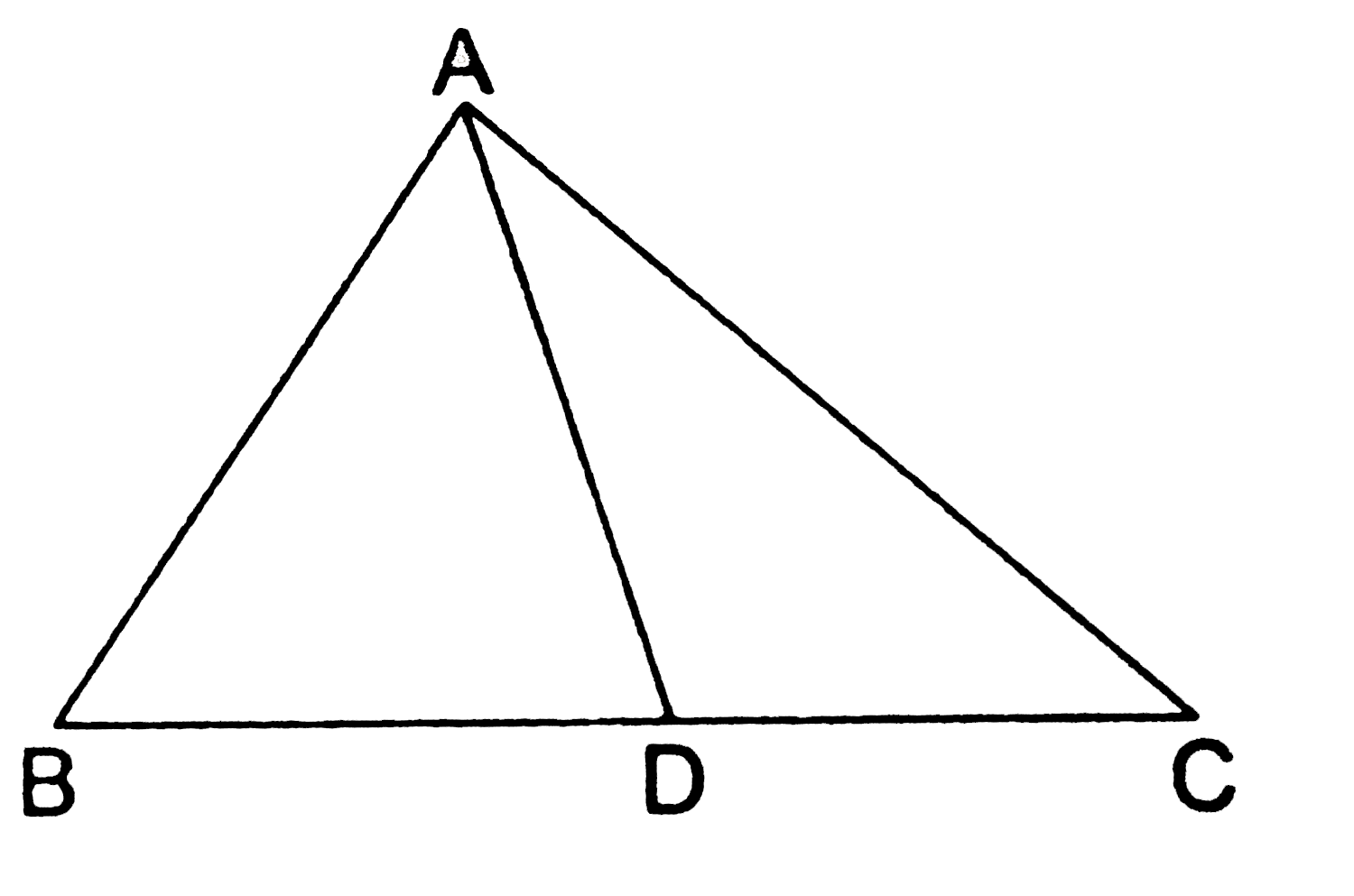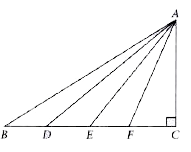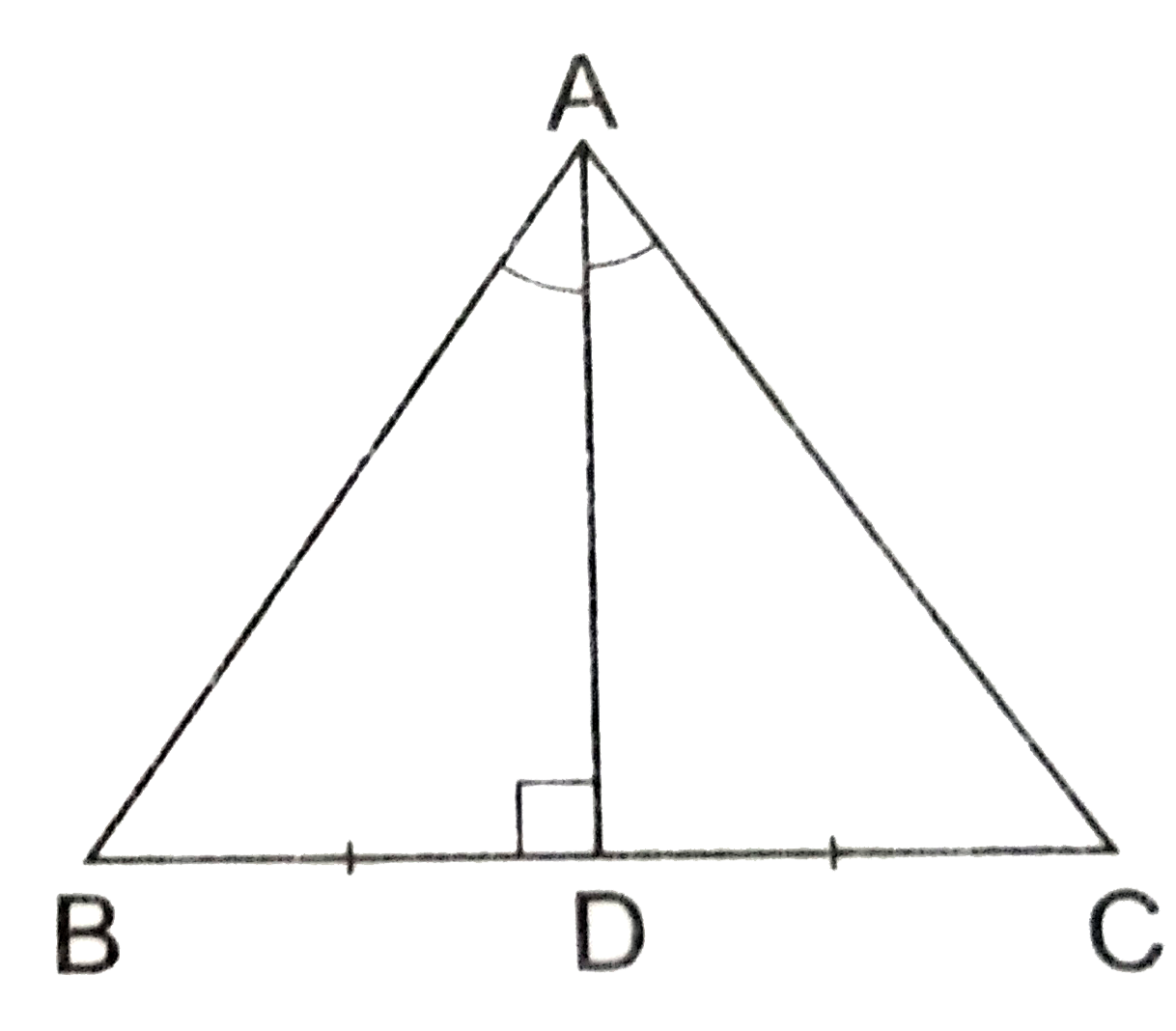In an equilateral ΔABC, D is a point on BC dividing BC in 3 equal parts then which one is true option.
9AD2=7AB2
AD2=AB2
4AD2=3AB2
None of these
To solve the problem, we need to analyze the equilateral triangle ΔABC with point D dividing side BC into three equal parts. Let's denote the length of each side of the equilateral triangle as AB=AC=BC=a.
1. Identify the Points:
- Let D divide BC into three equal segments. Therefore, BD=DC=a3.
2. Find the Midpoint:
- Let E be the midpoint of BC. Since D divides BC into three equal parts, E will be at a distance of a2 from B and a2 from C.
3. Apply Pythagorean Theorem:
- In triangle ABE:
- AE2=AB2−BE2
- BE=a2
- Therefore, AE2=a2−(a2)2=a2−a24=3a24.
4. In Triangle ADE:
- We need to find DE:
- DE=BE−BD=a2−a3=3a6−2a6=a6.
- Now, apply Pythagorean theorem in triangle ADE:
- AE2=AD2−DE2
- Therefore, AD2=AE2+DE2=3a24+(a6)2=3a24+a236.
5. Combine the Equations:
- To combine the terms, find a common denominator:
- 3a24=27a236
- So, AD2=27a236+a236=28a236=7a29.
6. Final Relationship:
- From the above, we have:
- 9AD2=7AB2
- This means that 7AB2=9AD2.
Conclusion:
The correct option is:
- 7AB2=9AD2
- Let D divide BC into three equal segments. Therefore, BD=DC=a3.
- Let E be the midpoint of BC. Since D divides BC into three equal parts, E will be at a distance of a2 from B and a2 from C.
- In triangle ABE:
- AE2=AB2−BE2
- BE=a2
- Therefore, AE2=a2−(a2)2=a2−a24=3a24.
- We need to find DE:
- DE=BE−BD=a2−a3=3a6−2a6=a6.
- Now, apply Pythagorean theorem in triangle ADE:
- AE2=AD2−DE2
- Therefore, AD2=AE2+DE2=3a24+(a6)2=3a24+a236.
- To combine the terms, find a common denominator:
- 3a24=27a236
- So, AD2=27a236+a236=28a236=7a29.
- From the above, we have:
- 9AD2=7AB2
- This means that 7AB2=9AD2.
The correct option is:
- 7AB2=9AD2
Topper's Solved these Questions
Similar Questions
Knowledge Check
If ABC is an equilateral triangle and D is a point on BC such that AD⊥BC, then
AAB:BD=1:1BAB:BD=1:2CAB:BD=2:1DAB:BD=3:2In ΔABC, P is the mid point of BC,Q divides CA internally in the ratio 2:1 and R divides AB externally in the ratio 1:2 then
AR divides PQ externally in the ratio 2:1BP,Q,R are collinearCP divides QR externally in the ratio 3:2DQ divides PR internally in the ration 3:2D is a point on the side BC of a ΔABC such that AD bisects ∠BAC . Then
ABD=CDBBA>BDCBD>BADCD>CA
In an equilateral triangle ABC, D is a point on side BC such that BD=13BC. Prove that 9AD2=7AB2.
View SolutionIn ΔABC, if D is any point on the side BC, show that (AB+BC+AC)>2AD.

View SolutionIn ΔABC, PQ is a line segment which intersect AB on P and AC on Q so that PQ||BC and divides ΔABC in 2 equal parts of same area then find BPAB.
View SolutionIn ΔABC, XY is parallel to BC and it divides the triangle into two equal areas (X lies on AB and Y lies on AC) then BX:AB equals
View SolutionIn right angled ΔABC,∠C=90∘andD,E,F are three points on BC such that they divide it in equal parts .Then 8(AF2+AD2)=

View Solution

